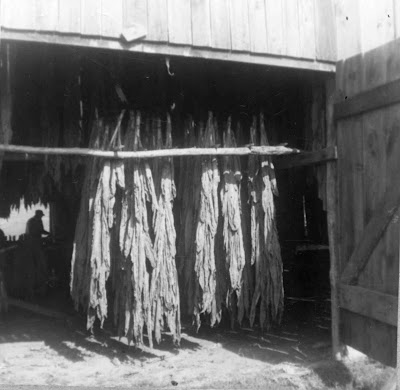Different
varieties of tobacco grow best in different climates and soils. They are also cured in different ways. North Carolina was the leading producer of
flue-cured bright leaf tobacco, most of which was grown in the eastern and
northcentral part of the state. Burley
tobacco, which is air-cured was grown in the mountain counties of Western North
Carolina.
While
the burley variety accounted for a very small proportion of the total tobacco crop
grown, it did bring a higher price.
Burley was valued as a flavoring ingredient in tobacco products,
especially cigarettes.
North
Carolina’s burley tobacco production amounted to only about three percent of
the national total in the early 1970s.
Locally,
County Agent R.E. Lawrence began promoting tobacco as a money crop around
1920. S.E. Verner planted an acre of
tobacco as a demonstration in 1925. By
the early 1930s there were several farmers in the Little River area raising
burley tobacco. Although it could be grown
in heavy red clay soils, the bottom lands in the river valley provided good
fields for the crop.
 |
| A group of Little River farmers listen to a discussion on tobacco, 1957. |
 |
| Tobacco hanging in Martin Shipman's drying barn, 1960. |
Transylvania
County farmers never produced large quantities of tobacco. Under the Agricultural Adjustment Act of 1938
a quota was established setting the number of acres of tobacco that could be
planted in each county. Transylvania
County’s quota was around 33 acres throughout the mid-to-late 20th
century. When the quota system was
eliminated in 2004 through the Fair and Equitable Tobacco Reform Act it was no
longer profitable for small farms to raise tobacco and ended tobacco production throughout
the mountain region.
Photographs
and information for this column are provided by the Rowell Bosse North Carolina
Room, Transylvania County Library. For more information, comments, or
suggestions contact Marcy at marcy.thompson@transylvaniacounty.org
or 828-884-1820.
No comments:
Post a Comment